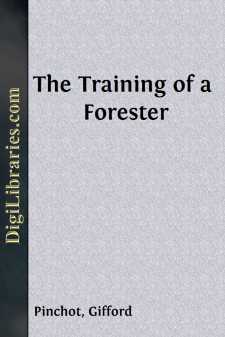Categories
- Antiques & Collectibles 13
- Architecture 36
- Art 48
- Bibles 22
- Biography & Autobiography 813
- Body, Mind & Spirit 142
- Business & Economics 28
- Children's Books 17
- Children's Fiction 14
- Computers 4
- Cooking 94
- Crafts & Hobbies 4
- Drama 346
- Education 46
- Family & Relationships 57
- Fiction 11829
- Games 19
- Gardening 17
- Health & Fitness 34
- History 1377
- House & Home 1
- Humor 147
- Juvenile Fiction 1873
- Juvenile Nonfiction 202
- Language Arts & Disciplines 88
- Law 16
- Literary Collections 686
- Literary Criticism 179
- Mathematics 13
- Medical 41
- Music 40
- Nature 179
- Non-Classifiable 1768
- Performing Arts 7
- Periodicals 1453
- Philosophy 64
- Photography 2
- Poetry 896
- Political Science 203
- Psychology 42
- Reference 154
- Religion 513
- Science 126
- Self-Help 84
- Social Science 81
- Sports & Recreation 34
- Study Aids 3
- Technology & Engineering 59
- Transportation 23
- Travel 463
- True Crime 29
Gifford Pinchot
Gifford Pinchot (1865–1946) was an American forester and politician, known for his pioneering work in conservation. He served as the first Chief of the United States Forest Service from 1905 to 1910, under President Theodore Roosevelt, and played a key role in expanding the National Forest system. Pinchot authored several influential works, including "The Fight for Conservation" (1910), which outlined his philosophy of sustainable resource use. He was also a two-term governor of Pennsylvania, advocating for social and environmental reforms during his time in office.
Author's Books:
Sort by:
by:
Gifford Pinchot
CHAPTER IPROSPERITYThe most prosperous nation of to-day is the United States. Our unexampled wealth and well-being are directly due to the superb natural resources of our country, and to the use which has been made of them by our citizens, both in the present and in the past. We are prosperous because our forefathers bequeathed to us a land of marvellous resources still unexhausted. Shall we conserve...
more...
by:
Gifford Pinchot
WHAT IS A FOREST? First, What is forestry? Forestry is the knowledge of the forest. In particular, it is the art of handling the forest so that it will render whatever service is required of it without being impoverished or destroyed. For example, a forest may be handled so as to produce saw logs, telegraph poles, barrel hoops, firewood, tan bark, or turpentine. The main purpose of its treatment may be...
more...



